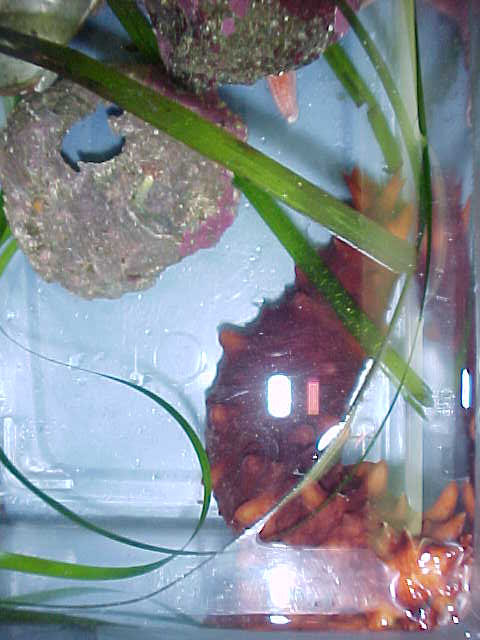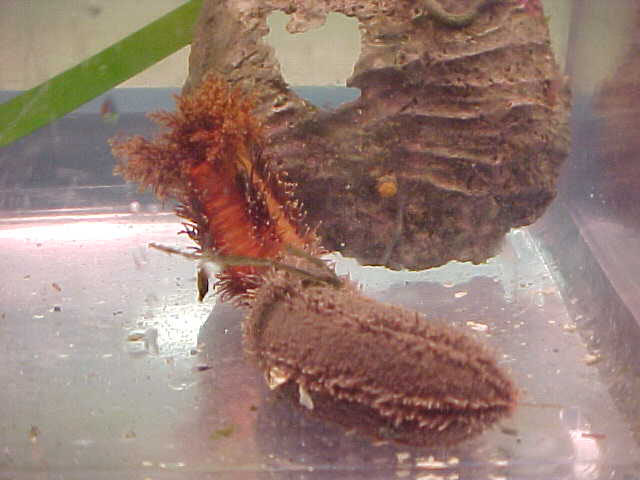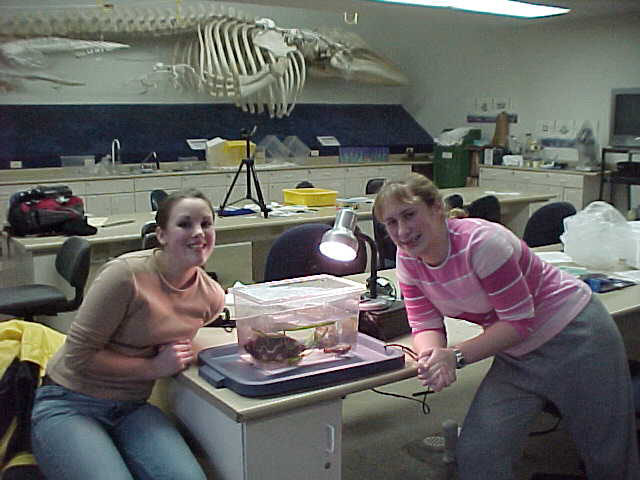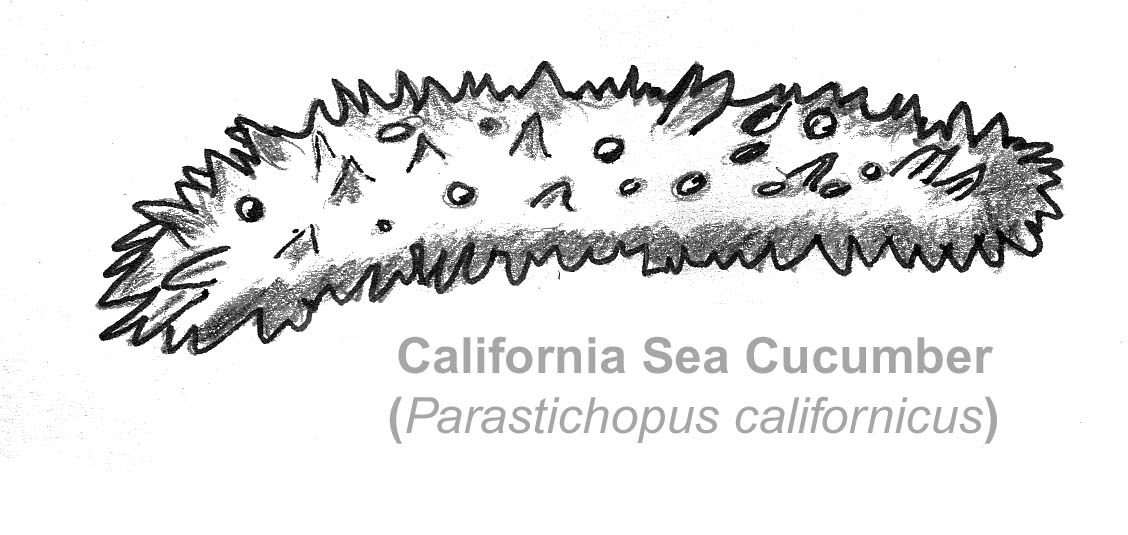Parastichopus Californicus
Common Name: California Sea Cucumber
The P. Californicus can be identified by their prominent, stiff, conical papillae (cone-shaped spines). They also have tube feet on their ventral side. They are dark red or brown in color and have an approximate length of 40 cm (16 inches). They are found on the Northwest coastal waters from Alaska to Isal Cedros in Baja, California. They live in an subtidal habitat, as well as feeding on detritus and small organisms. They are currently the only Sea Cucumber harvested in British Columbia, however only every three years to control population decline. They are eaten for their five muscle strips and body wall. One California Sea cucumber is shown below, this one is currently being kept at the Bamfield Marine Station and we have nick named him "Mike."

|
Cucumaria Miniata
Common Name: Burrowing Sea Cucumber
This bright orange sea cucumber has ten branched tentacles and five rows of tube feet. They are 25 cm (10 inches) long and live along the western coast from Gulf of Alaska to Avila Beach in California. They live in rocky areas with lots of crevices to hide from their predators, particulary the Sea Star Solaster Stimpsonii. They live in the intertidal zone all the way out 24 m (80 ft) or so. Their branched tentacles are used to collect drifting food. The photograph below shows a Burrowing Sea Cucumber, along with sea grass, it's favorite environement.

|
Eupentacta Quinquesemita
Common Name: White Sea Cucumber
These Sea Cucumbers can not completely contract their tube feet. They have ten yellow or white branched tentacles, eight long and two short. They are ten cm (four inches) in length and live both off the coast of japan, as well as the Sacramento Reff, Baja, California. They like rocky places, from lower intertidal to 15m off shore. Their tentacles remain retracted during daylight hours. A White Sea cucumber is shown below, lying on a rocky surface.

|





